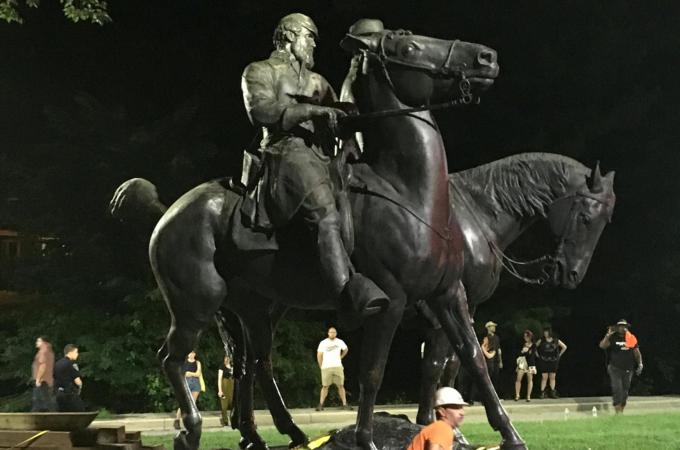Tearing down prejudice
Watching TV images of crowds pulling down a statue of a Civil War soldier in North Carolina, I found myself thinking of a 16th-century pope named Paul IV.
He was so loathed by Romans, Jews and Christians alike, that when he died, the people pulled down his statue on the Capitoline Hill, cut off its head, dragged it through the streets of the city and then dumped it in the Tiber River.
That historical anecdote communicates in shorthand the feelings of the people for this severe and cruel leader. Paul IV was a leader of the Inquisition, the creator of the Index of Forbidden Books and the first pope to lock the Jews into a ghetto each night, while forcing them to wear yellow caps when they went about their business during the day.
Personally austere and deeply religious -- unlike a few of his predecessors -- he was also rigid and unyielding. In his five-year pontificate, he alienated allies, waged an unsuccessful war, promoted corrupt family members and resisted warnings to deal with their corruption until it was too late.
While Rome's citizens could not threaten him during his life, they were able to take out their frustrations on his statues in death.
The story reminds me of scenes of Eastern Europeans toppling the statues of Lenin or Iraqis pulling down statues of Saddam Hussein.
There is something about such outpourings of rage by men and women recently freed from their tyranny that is completely understandable.
Today's controversies surrounding the various Civil War statues seems something else entirely.
Some people worry that there is a purging of history taking place, but I think the controversies have less to do with the Civil War than with current political issues. For one thing, Americans are abysmal when it comes to history.
Regarding the Civil War, only half of Americans can say when it took place. A third of us don't know that Abraham Lincoln was head of the Union Army. Fewer than one in five know what the Emancipation Proclamation did.
That the battle over the statues is not really about the Civil War they represent is consistent with the fact that the installation of many of these statues was often tied to more contemporary events. They were intended to send a message -- affirming Jim Crow laws and the rise of segregation during one period in history. Rejecting the civil rights movement later on.
And the statue battle today is more about immigration and a sense of victimhood in our multicultural land than about old warriors who were willing to sacrifice 600,000 blue and gray dead for the right to determine for themselves which human beings could own other human beings.
I think all of this controversy could be a good thing if Americans decided to learn a bit more about their past to better understand their present. Perhaps they could start with Ken Burns' epic documentary on the Civil War, with its haunting images and its first-person accounts of the brutality of slavery and the brutality of the war to end it.
We don't have to purge General Lee or General Jackson or Jefferson Davis from our memories. Indeed, we would be the worse off if we forgot them.
As a country, however, we do need to empathize more strongly with our brothers and sisters who see the stars and bars, the tributes to old racists and the defense of new ones as a message that they are still not fully equal, still not fully accepted, still not fully free.
Tearing down statues is the easy part. Tearing down prejudice? That takes centuries.
- Greg Erlandson is director and editor-in-chief of Catholic News Service.



















